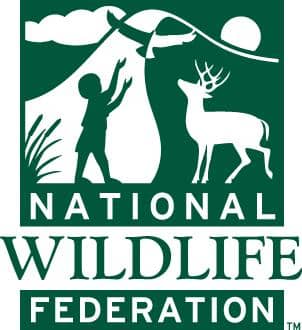Sportsmen, Wildlife Groups Address Mule Deer Declines
OutdoorHub 09.23.14

Hunters, advocates teaming up with state wildlife agencies to explore solutions
Wyoming and Colorado have long been home to some of the country’s largest mule deer herds, but continuing declines in the quintessential Western species are prompting hunters and wildlife enthusiasts to team up with state agencies and researchers to stem the losses and boost populations.
The National Wildlife Federation and its Colorado and Wyoming affiliates are working with other advocates and state wildlife agencies to determine what’s driving down mule deer numbers and how to reverse the troubling trend.
NWF and CWF participated in a recent statewide summit hosted by Colorado Parks and Wildlife to get input for its Colorado West Slope Mule Deer Strategy. Biologists will present the draft plan to the wildlife commission in November. A CWF/NWF fact sheet, “Legacy in the Crosshairs: Colorado’s ‘Mule-Deer Factory’ on the Decline.”
The Wyoming Wildlife Federation helped establish the Wyoming Mule Deer Coalition, which, in cooperation with Wyoming Game and Fish, organized the first annual mule deer sumit in August to explore the causes of the muleys’ decline and solutions.
“Though we probably can’t get to the numbers of mule deer we had in the ‘90s, there are things we can do now to stabilize and grow mule deer numbers by improving habitat and protecting and enhancing migration corridors,” said Steve Kilpatrick, WWF’s executive director and a wildlife biologist formerly with Wyoming Game and Fish.
Wyoming’s statewide mule deer population has dropped about 36 percent from 1990, from more than a half million to roughly 374,400, according to Game and Fish.
In Colorado, the statewide deer population was an estimated 408,000 in 2012, far short of the state’s objective of 525,000 to 575,000. Northwest Colorado’s White River herd, dubbed the mule-deer factory, numbered an estimated 32,000 deer in 2013, down from more than 100,000 in the 1980s.
“The unusual and alarming declines in western Colorado mule deer populations have galvanized Parks and Wildlife, Coloradoans and organizations to take action to save this treasured native species,” CWF Executive Director Suzanne O’Neill.
Biologists are trying to determine what’s behind the decreases – drought, disease, such barriers as roads and fences, predators and loss of habitat to development. Kilpatrick said it has become apparent that much of the problem is habitat, which relates directly to pregnancy rates and fawn survival. And, fawns turn into bucks.
One of the resources used in understanding the needs of deer in Wyoming is the
Wyoming Migration Initiative. Researchers have documented the longest migration of mule deer ever recorded – 150 miles from southwest Wyoming’s Red Desert to the Hoback Basin in northwest Wyoming’s Bridger-Teton National Forest.
“Mule deer represent an important game species for sportsmen and, as their numbers continue to diminish across the West, it signals that the health of the habitat and ecosystem of the land is in decline,” said Lew Carpenter, the National Wildlife Federation’s regional representative.
Contact
Judith Kohler, National Wildlife Federation, kohlerj@nwf.org, 720-315-0855

